Methane is a potent greenhouse gas. So how is Sask. reducing emissions?
From waste management to agriculture, gains are being made, but some say the data isn't accurate
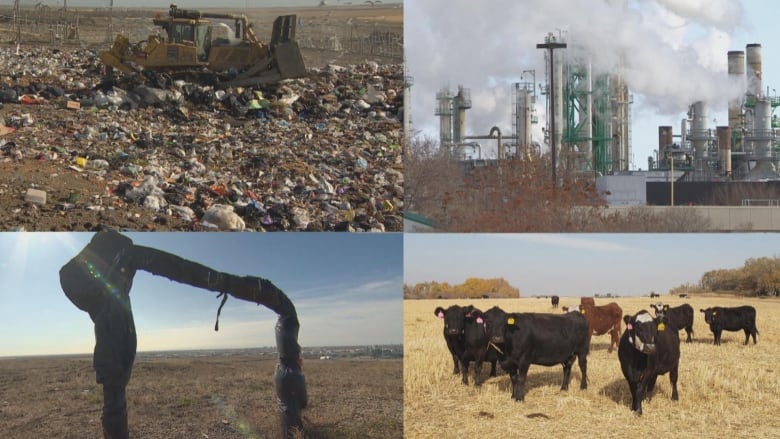
The sound is almost deafening.
An industrial compactordrags hundreds of pounds of garbagealong the ground at the City of Regina landfill, crunching as it collides with other heaping piles.
Under the surface of all that garbage, something that can't be seen or smelled is collecting: methane gas.
Methane is a potent greenhouse gas that, according to the Government of Canada,is estimated to be responsible for about 30 per cent of observed global warming to date.
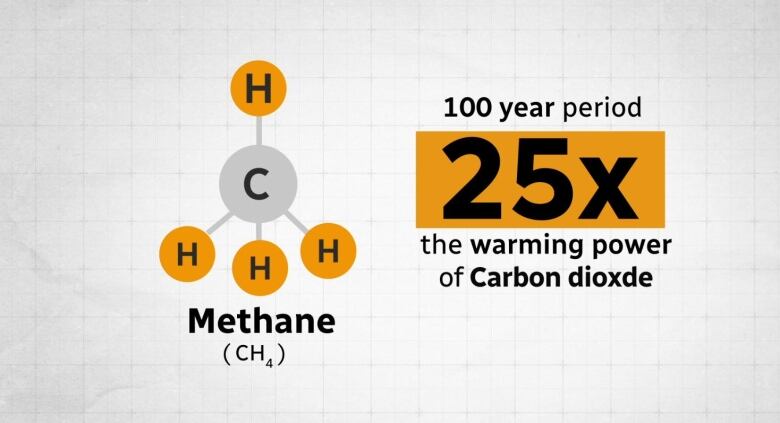
Methane is found in many places around the world from landfills, to wetlands, to the production of oil and gas.
In 2020, Saskatchewan produced more than 15,500 kilotonnes of carbon dioxide equivalent in methane emissions. Canada as a whole produced92,000 kilotonnes of carbon dioxide equivalent that same year.
Industry and governments say work is being done to reduce methane emissions. So what does that entail?
Lighting up homeswhile making money
Regina's landfill is one of the city's main producers of methane gas.
"When the garbage decomposes in the landfill, there's no oxygen in the hill," said Shelley Wellman, environmental services manager with the City of Regina. "So through the degradation process, methane is what's produced."
In 2008, wells were installed within the landfill to capture methane gas. Until 2017, that gas was flared from a stack.
While this process reduced the harmful effects of methane, it converted it into carbon dioxide, still releasing a greenhouse gas.

That's where the gas to energy plant came into play in 2017.
The $5-million facility takes the methane from the 51 wells, then cools and purifies it, all while computerscarefully track its progress.
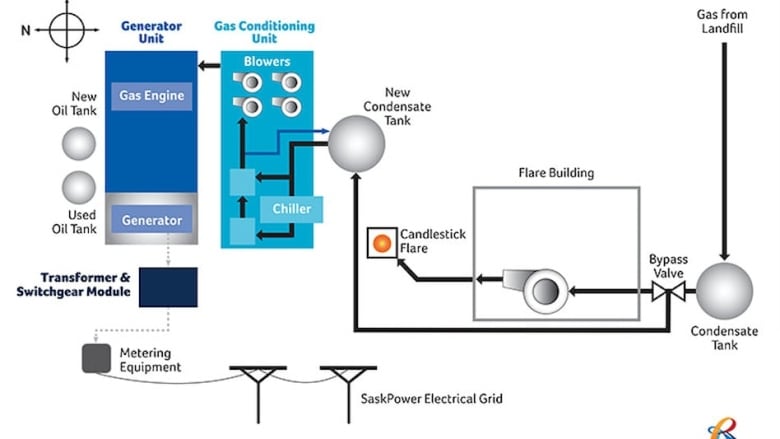
From there, the methane is used as fuel foran engine in another section of the plant, producing up to a megawatt of power. That's sold off to SaskPower, which gives the city about $1 million per year to power up to 1,000 homes in Regina with the generated electricity.
"It turns a waste product into a renewable resource" said Wellman. "So instead of just burning it. we actually have an end product."
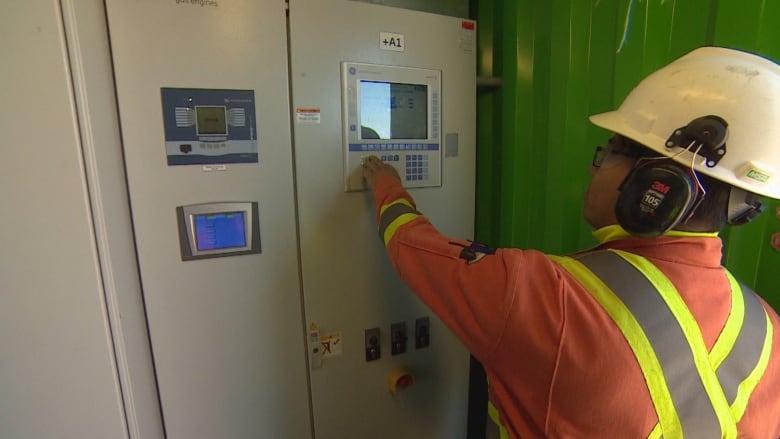
The city estimates the plant removes about 30,000 tonnes of greenhouse gas emissions per year, or the equivalent of removing about 8,000 cars from the road.
Wellman said upgrades are coming to the plant that could increase its efficiency to the equivalent of removing 12,000 cars from the road.
She also stressed the importance of taking more proactive steps like being conscious of what gets thrown into garbage bins to avoid methane occurring in the landfill in the first place.
Belching bovines help eliminate emissions
On a 56-hectare plot of farm land near Clavet, Sask., Bart Lardner walks through fields of different crops while more than100 of his Angus and Hereford-Angus cattle look on.
Lardner isn't farming this land, he's using it as his research lab. The cows are his test subjects.
In 2018Lardner, a professor in the department of animal and poultry science at the University of Saskatchewan, and his team of research assistants began a project to reduce methane emissions from cattle.
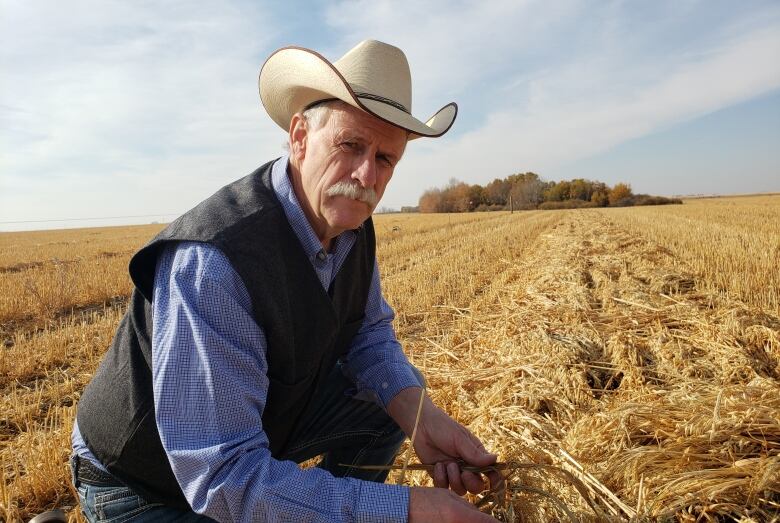
Methane is expelled through a bovine's mouth and nose when it burps. The methane forms in the bovine's rumen one of four chambers in its stomach as it breaks down food.
Roughly a third of all greenhouse gasemissions from the agricultural sector come from the digestive activities of cattle, according to research byAgriculture and Agri-FoodCanadaequating to more than three per cent of Canada's overall GHG emissions.
Lardner's project looks at what combination of crops will reduce methane from bovines, while still providing them quality nutrition.
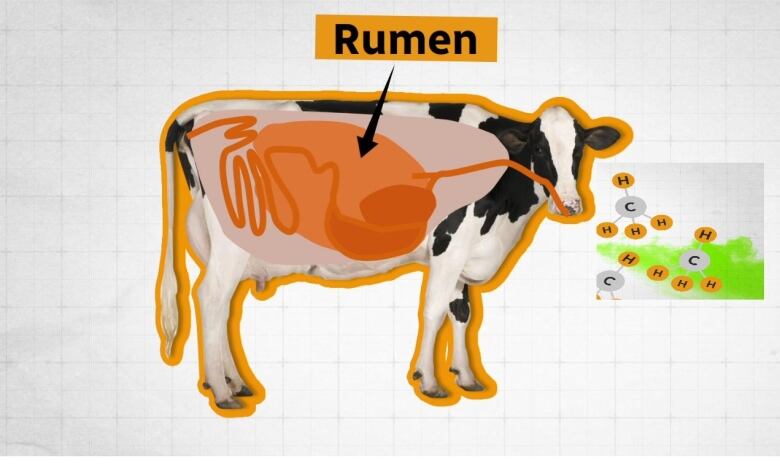
So far, legumes specifically alfalfa look to be the most promising, according to Lardner's research.
"Right now we're still collecting multiple years of data, but there's certainly anywhere from two to five per cent lower levels of emissions coming from some of those different systems," said Lardner.
The team is hoping to collect a total of five to six years of data before they reach their conclusion.
Measuring methane output from cattle is not an easy task.
Lardner and his team have come up with two ways to capture thedata. One is through what Lardner calls a green feeder.
A metal head chamberwhere the animal can place its head is attached to the small trailer. A tag on the animal's ear is scanned, and a pellet treat is dispensed. While the bovine eats the treat, the chamber collects gasses emitted by the cow and sends the data to a cloud storage system.
From there, the gasses are assessed at a lab.
The second way is a bit more intrusive.
The animal ingests a compound known as sulphur hexaflouride, which mixes with compounds in its stomach. After a couple of weeks, a sort-of mask is strapped onto the cow, with a chamber for its nose connected to a tube.
The chamberand tube, under vacuum pressure, suck the gasses from the cow's nose and transfers them into a device called a yoke, which hangs around its neck.
The gasses collected in the yoke are then sent for assessment at the lab.
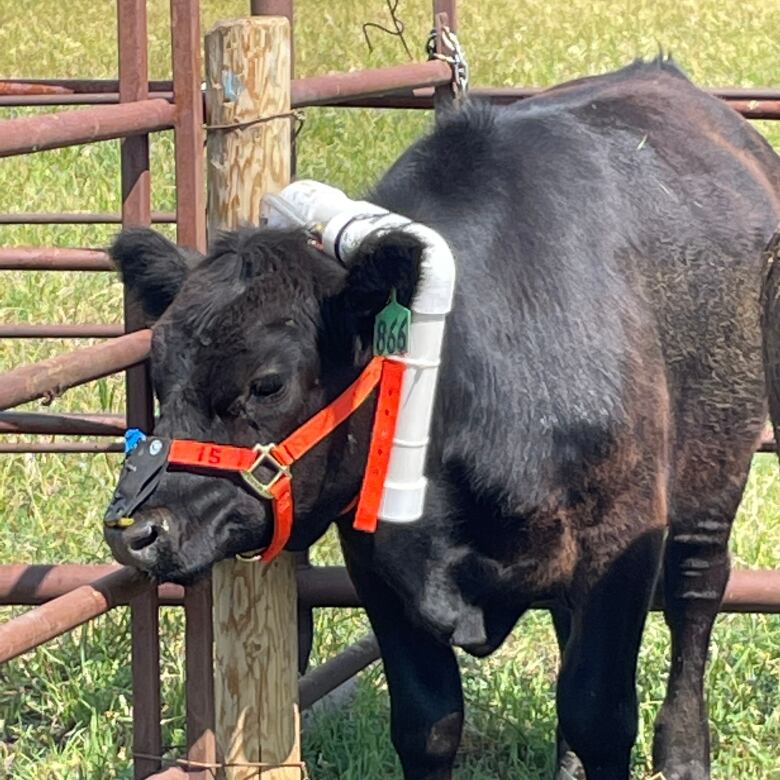
"Day 1 they get a little upset about it,"Kaitlyn Nielsen, one of Lardner's research assistants, said of the mask. "The steers in particular will come running out of the shoot and throwing their heads."
But by Day 2, she says, they've settled down.
The animals rotate through three different combinations of crops three times to get ample data.
Although there's still a bit more data to collect on his project, Lardner hopes to take his research beyond his field.
"We can take that data and we can talk to producer groups," said Lardner.
"We can say if you think about changing you croprotation that's not only going to reduce emissions from your herd as a whole, but it's also going to capture a lot of carbon."
Oil and gas have solutions, but doubts surround them
Oil and gas production in Saskatchewan makes up nearly 60 per cent of the province's methane emissions.
Methane can be intentionally released when natural gas is flared or vented at an oil facility. It can also leak from valves or storage tanks.
The province says methane emissions were cut by more than60 per cent from 2015 to 2021 from oil and gas alone exceeding a goal set in 2015 in the province's oil and gas Methane Action Plan to reduce emissions by 40 to 45 per cent by 2025.
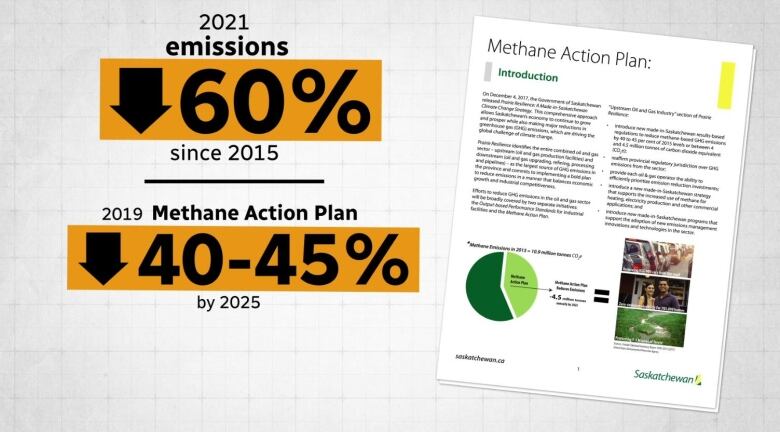
Measuring reductions in methane emissions has proven to be difficult, as the oil and gas industry is responsible for reporting its own emissions. A recent Carleton University study found actual emissions from some wells in Saskatchewan are nearly four times greater than reported.
Matthew Johnson, who conducted the study and heads the Energy and Emissions Research Lab at Carleton University, said the findings could have an impact on the work the province has done to reduce emissions.
"[It]could completely scuttle that, if we don't take this as the opportunity it presents to solve these sources," said Johnson.
The provincial government told CBC in response to Johnson's report that the type of wells in the study represent only about 10 per cent of the production in the province, and are known to be difficult to measure.

Despite this, energy companies in Saskatchewan say they're working toward solutions.
Several companies received a total of $20 million from the federal government in February 2022 to work on methane reduction projects.
The companies involved either declined to speak with CBCor didn't answer requests for interviews.
Those projects could include working with companies like IJACK Technologies, an oilfield equipment manufacturer based in Moosomin approximately 225 kilometres east of Regina.
The company has produced several units it says reduce emissions at oilfield sites the most popular of which is a vapour recovery unit (VRU).
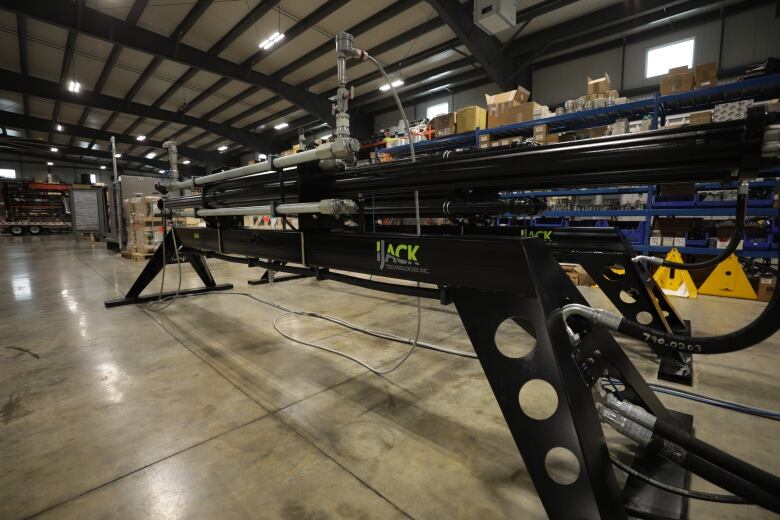
The device captures the gas, compresses it and sends it down a line to a processing facility. Similar to the landfill project in Regina, the gas can then be used for power generation.
Tim Beals, head of business development with IJACK, said his company doesn't have data on how much emissions have been cut down by operations using the VRUs, but that it can eliminate essentially all emissions on site.
The units have been popular, Beals said, as oilfield operators can gain environmental credits for using them, thus avoiding carbon tax.
But he said operators aren't only in itto gain credits.
"This is a cost for them," said Beals. "It doesn't generate any revenue for them. I think that shows they care about the environment."
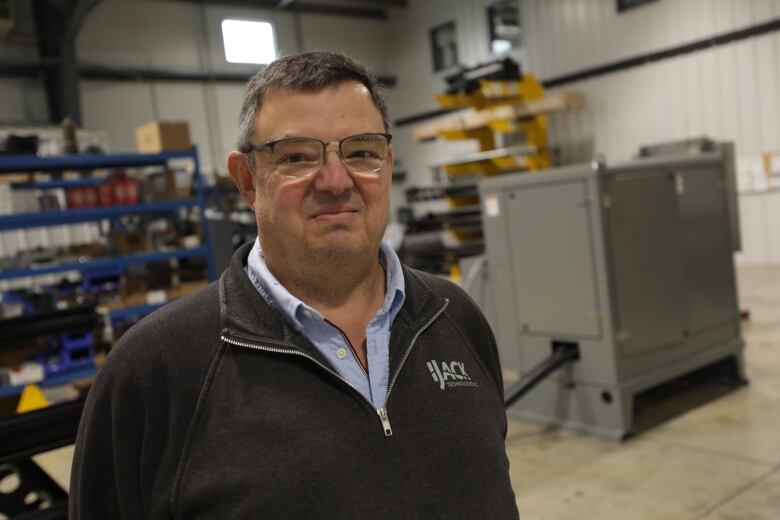
Emily Eaton, a professor in the department of geography and environmental studies at the University of Regina, is skeptical of work done in this field to reduce emissions. She agreed that allowing companies to report their own emissions will lead to flaws, and said the province using 2015 as the base year for its Methane Action Plan inaccurately measures emission reductions, as that was the last year before a major downturn.
They're using a sort-of all-time high as their base year from which we should be reducing emissions."
Eaton said the federal government uses 2012 as a base year for its methane regulations several years before the downturn.
But Debby Westerman, executive director of resource management for the provincial Ministry of Energy and Resources, said 2015 was chosen because that's when a new computer system was implemented. That system, she said, allowed more consistent and accurate data from 2015 onward.
"There's only a slight reduction in oil production since the downturn," said Westerman. "But we've seen a lot of investment by industry particularly in combustion of gas and collection of gas."
The road ahead
Saskatchewan's Oil and Gas Emission Management Regulations state the province will continue to cap methane emissions beyond the end of its Methane Action Plan in 2025.
The federal government, meanwhile, is working on a framework to reduce methane emissions from oil and gas by 75 per cent. The regulations are expected to be announced this year.
More than 100 countries have signed the Global Methane Pledge, launched at COP26 in November2021. That goal states countries should work to collectively reduce emissions by at least 30 per cent below 2020 levels by 2030.
But with the world falling behind onglobal environmental targets and jurisdictional challenges over environmental policy, time will tell if any of the methane targets are met.













_(720p).jpg)


 OFFICIAL HD MUSIC VIDEO.jpg)
.jpg)



























































































